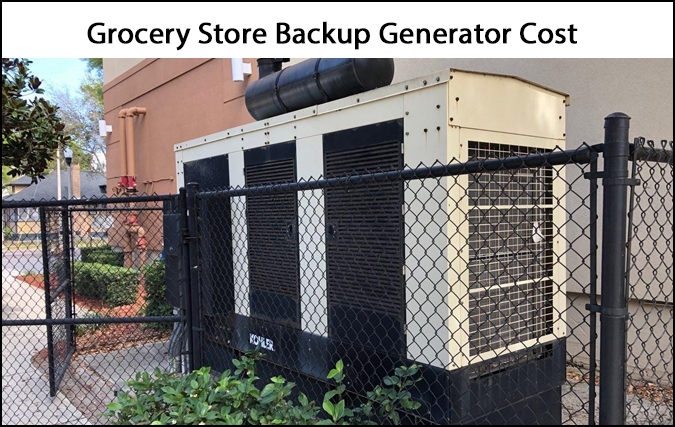Last Updated: May 03, 2023
The Cost of Backup Power for Your Grocery Store: What You Need to Know
Compare Grocery Store Generator Pricing
Fill out our 30 second free form to receive competitive pricing from pre-screened generator dealers. No commitments. Our service is always free!
Businesses across the country now include emergency preparedness plans as part of their standard operating procedure. No plan is complete unless it includes backup power.
Of course, having a backup generator goes beyond fulfilling a government requirement. You're ensuring the lights remain on so that employees and customers exit the store safely. In addition, you're ensuring the health of your stock. No one wants to walk in to discover every item in the freezer section thawed overnight.
To handle the power needs of the average grocery store, a traditional household generator doesn’t cut it. You need an industrial unit.
How Much does a Grocery Store Generator Cost?
A general rule of thumb for the inclusive cost of a generator – the unit itself plus installation, warranty, and service agreement – is $400 per kilowatt. For just the unit, average prices are:
- 50 kW, diesel power: $16,000
- 100 kW, propane power: $26,000
- 150 kW, propane power: $30,000
- 400 kW, diesel power: $85,000
Pricing variables include location and cost of installation. You can save between 25 and 50 percent with a used generator, but look for one of the top brands to ensure greater reliability.

How do You Know what Size Generator You Need for a Grocery Store?
Sizing the generator is the most difficult part. If the unit doesn't generate enough power to fulfill your needs, you may wind up damaging the items instead of powering them. A generator that's too large, though, just wastes your money.
You also need to make sure your generator is compliant with National Electrical Code (NEC) requirements, including sizing, use, installation, and safety features. The easiest way to determine size and remain NEC-compliant is to hire a certified electrician. He or she determines your power usage and generator needs by inspecting your facility and working with you to determine which units you deem critical to continue running in the event of a power outage.
However, you can determine generator size yourself; it just requires a willingness to perform a series of mathematical calculations.
Compare Grocery Store Generator Pricing
Fill out our 30 second free form to receive competitive pricing from pre-screened generator dealers. No commitments. Our service is always free!
How to Size a Grocery Store Generator
Start with an inventory of every item you want the generator to run in the event of a power outage. Then, determine the kilowatts (kW) of each item. The total is the amount of power you need.
You find the kW information listed directly on the item. However, a missing tag doesn't mean you can't find that magic number; it may be in the owner's manual or available online.
Some items list amperes instead of kW. In that case, you need to convert amperes to kW. Calculate resistive load kilowatts by multiplying the amperes by the volts. Calculate reactive loads by taking that product (amps X volts) and multiplying it by the load factor.
A less accurate calculation, though easier, requires using your store's square footage, using the formula 50kW plus 10 watts for each square foot. So, a 10,000 square foot store looks like this: 50 kW + 100,000 watts. There are 1,000 watts in a kilowatt, so that becomes 50 kW + 100 kW. Therefore, you need a 150 kW generator.
Resources:
Find the Best Generator Dealers Who Will Compete for Your Business
Compare Grocery Store Generator Pricing
Fill out our 30 second free form to receive competitive pricing from pre-screened generator dealers. No commitments. Our service is always free!
Compare Grocery Store Generator Pricing
Fill out our 30 second free form to receive competitive pricing from pre-screened generator dealers. No commitments. Our service is always free!